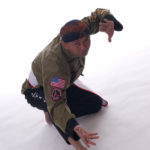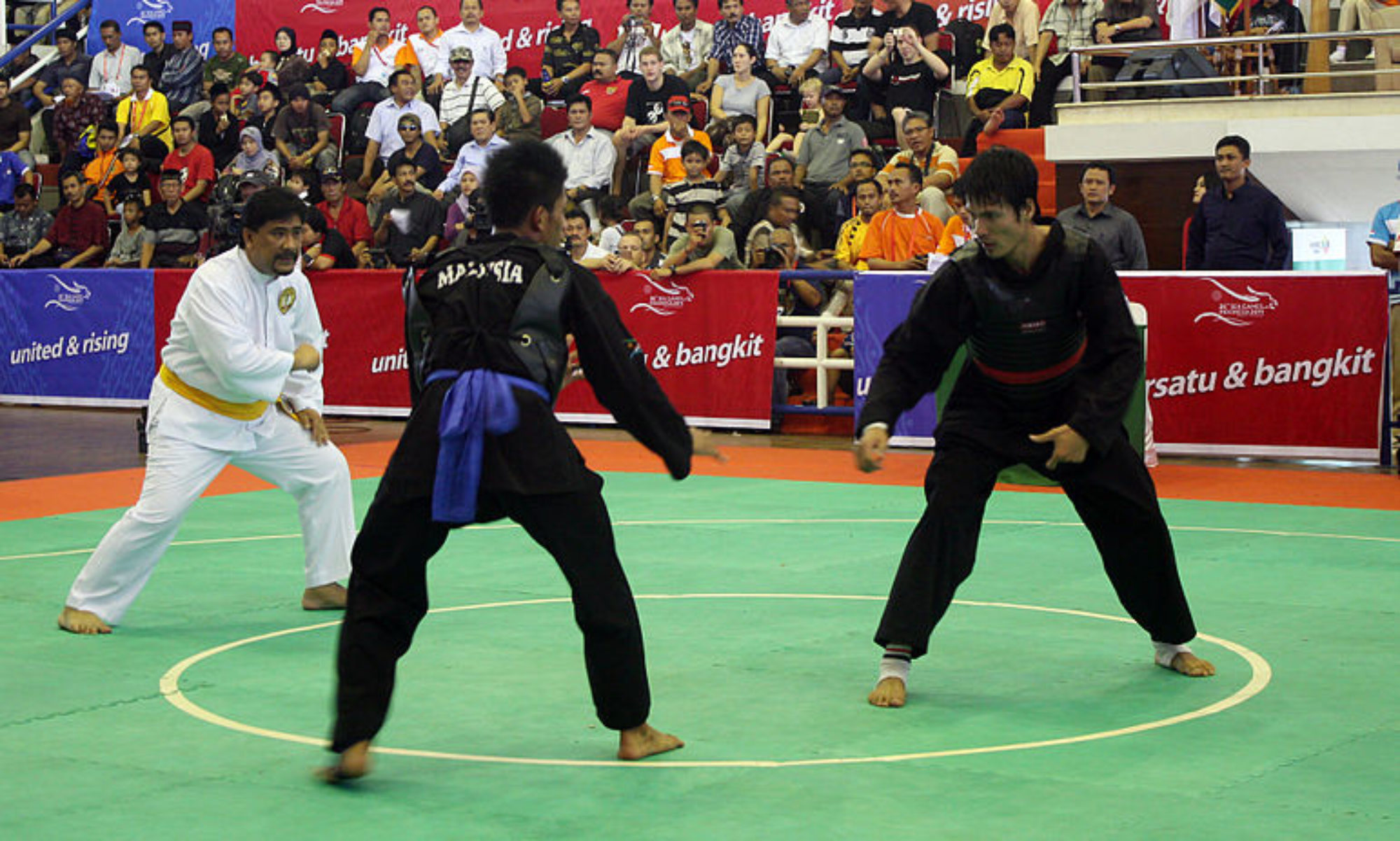“Ngluruk Tampa bala menang Tampa ngasorake”
“Come without reinforcements. Win without harming”
The expression above originates from Javanese war tactics. “Come without reinforcements” means go into battle assuming no one is there to bail you out. “Win without harming” is a statement of principle. The goal is not to conquer or degrade it is to prevail in the manner best for all. Over the years this expression has evolved into an ideal of nobility which has permeated into the psyche of silat.
But what does this have to do with sport silat? Whether it’s Wrestling, Karate, Boxing, Judo or Silat, competitions are one-on-one bouts with rules. The person who scores the most points, gets the submission or knockout wins, right?
The key lies in decoding the hidden meaning of each sports’ rules. In all sports rules provide safety and they define a framework for rewarding desirable actions. With combat sports, the rules highlight and reflect the spirit and mentality of the underlying martial art.
Consider Olympic Boxing rules. Before 2016 scoring was primarily based on hits landed. In 2016 the judging criteria shifted to number of target-area blows landed, domination of the bout, technique and tactical superiority and competitiveness.
These boxing scoring systems reflect the adage “The best defense is a good offense”. Both the old and new scoring criteria clearly reward an active, attacking boxer. Defense a factor in the event of a tie. Consequently many boxing coaches and their gyms train with an offense-first mentality. Don’t get me wrong . Defense is obviously a huge part of the sport. One cannot be a successful boxer without being able to slip, roll, or block. My point is that the rules do not equally value defense as much as offense. A boxer with superior defensive skills, according to the rules, must attack at some point in order to win the match.
In the silat tanding (point sparring) scoring system, the athlete earns one point for landing an attack with the hand. Two points are awarded for a successful kicks. Flooring an opponent by way of scissor, sweep or throw earns three points. Right away we see a hierarchy of values. Feet are more important than hands. Taking an opponent to the ground is rewarded most of all. Here is the first subtlety that encourages a defensive mindset. Takedowns are much riskier and much harder to initiate offensively. Bonus scoring is really where we see the explicit importance of defense. Any of the techniques above earn a bonus point if performed as a counter to an opponent’s attack. In practice this means that for equal effort acting in defense is more “valuable” than acting as the aggressor.
Understanding of traditional Silat training is the key to understanding the sport Silat scoring system. Traditional Silat training places a heavy emphasis on footwork. This partially explains why more points are awarded for a foot strike as opposed to a hand strike. It becomes more clear when you note that many silat styles think of stepping with the foot and kicking as equivalent and interchangeable. Even though sport Silat scoring does not differentiate how you evade an attack, the theory is footwork is a more effective way to defend against an attack. This may be in part because traditionally Silat is a weapons-based art focusing primarily on edged weapons. It is impractical to rely on blocking, parrying, or evading edged weapons with your hands because they can easily damage leaving you in an undesirable situation.
The final and arguably most important, part of traditional Silat training deals with giving a smaller, weaker person the best chance of surviving a physical encounter against a larger, stronger opponent. It is very important to understand that the smaller, weaker person is not trying to defeat the larger stronger opponent. The goal of the smaller weaker person is to survive. How does surviving translate to winning in a sporting event?
Returning to the adage at the beginning of this article. Someone operating at a disadvantage must execute perfectly. They must be precise in predicting their opponent’s movement and exactly time the moment to launch a counter attack. In other words, they must rely on all the tools they have on hand. There are no reinforcements. There is no alternative.
A silat practitioner will even consider this final counterattack as a defensive action. Not because “the best defense is offense”, but because this final, potentially devastating act ends the confrontation. This is core psychological difference between Silat and other sports. The Silat practitioner is constantly thinking and acting with the intent of being “safe” as opposed to doing harm. If an action causes harm, it is viewed as a means to increase the overall level of safety for everyone. This alternate viewpoint of winning without doing harm and emphasizing defending over attacking is the main idea that Sport Silat hopes to share and to introduce to the world.

Daniel Prasetya
Daniel Prasetya is the head coach for the United States Sport Silat Association. Originally from Surabaya, Indonesia Daniel and his family now reside in Fort Collins, Colorado.
Daniel is head instructor at the Inner Wave Martial Arts Academy in Loveland, Colorado and one of the primary caretakers of Pencak Silat Inti Ombak.

